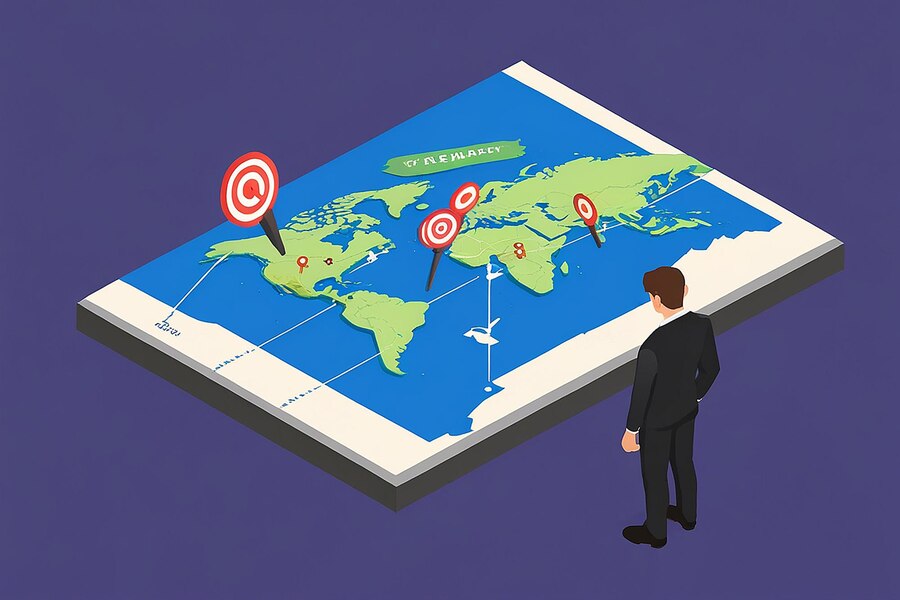Tracing the Unseen Path of MH370 on Google Maps

The mystery of Malaysia Airlines Flight MH370 stands as one of the most baffling aviation incidents in modern history. Disappearing without a trace in March 2014, the flight has intrigued and haunted aviation enthusiasts, travelers, and the general public alike. In recent years, the integration of MH370’s potential site into platforms like Google Maps has sparked interest, debate, and even controversy. This post explores the intersection of aviation history, technology, and public mapping, uncovering what this digital inclusion means for the world.
The Enigma of MH370 Malaysia Airlines Flight
In the early hours of March 8, 2014, Malaysia Airlines Flight MH370 vanished from radar screens. Departing from Kuala Lumpur, the Boeing 777-200ER was bound for Beijing, carrying 239 passengers and crew. Despite a vast international search effort, its disappearance remains unsolved, leading to numerous theories and speculations.
The flight’s sudden disappearance challenged conventional aviation safety measures, highlighting gaps in tracking technology. This incident catalyzed discussions around enhancing aircraft communication systems to prevent such mysteries in the future. For aviation enthusiasts, the mystery fuels ongoing discussions and investigations, seeking answers to unanswered questions.
The search efforts for MH370 have been both expensive and expansive. They cover vast areas of the Indian Ocean and involve numerous countries. Despite these efforts, only a few pieces of debris have been conclusively linked to the missing aircraft, leaving much of the aviation community and the public yearning for closure.
Google Maps Revolutionizing Global Mapping
Google Maps has revolutionized the way we see and interact with the world. It offers real-time navigation, satellite imagery, and location-based services to billions globally. This powerful tool goes beyond merely providing directions; it serves as a window into distant places and events.
This platform’s ability to share information instantly has changed how we understand global events, including aviation incidents. By visualizing data in an accessible format, Google Maps allows users to engage with historical and contemporary events. This democratization of information empowers individuals to explore places they might never physically visit.
For travel bloggers and tech-savvy users, Google Maps is an essential part of daily life. It enhances travel planning, provides insights into destinations, and enriches content with visual storytelling. This technology has transformed not just navigation but also the way stories are told in our digital age.
MH370 and Google Maps Coverage
The integration of MH370’s potential site into Google Maps has been both groundbreaking and controversial. Announced amid global anticipation, this feature allows users to explore mapped areas related to the flight’s disappearance. However, its inclusion has sparked varied responses, from intrigue to ethical concerns.
For some, this mapping feature offers a sense of connection to the ongoing search and investigation. It invites the public to engage with the mystery, providing a digital space for exploration and reflection. However, others raise concerns about the sensitivity of displaying such sites, questioning the ethical implications of public access to potentially tragic locations.
Public reaction has been deeply mixed. While some appreciate the transparency and educational value, others worry that it may trivialize the tragedy. This balance between openness and respect remains a delicate issue for platforms dealing with sensitive historical events.
Insights from Experts on Mapping and Aviation
Aviation experts and technological analysts provide valuable insights into the significance of MH370’s inclusion on Google Maps. They highlight the potential of mapping technology to aid in investigations, offering new perspectives and data analysis capabilities. This technology, they argue, could transform future aviation safety measures.
Technologists emphasize the role of digital mapping in understanding complex data. By visualizing potential crash sites and debris patterns, maps can support ongoing investigations. This capability underscores the importance of integrating advanced technology into aviation safety protocols and search efforts.
Despite these benefits, experts caution against oversimplifying complex issues through digital platforms. They stress the need for careful consideration of ethical concerns, particularly when dealing with unresolved tragedies. The challenge lies in leveraging technology to support investigations without compromising sensitivity and respect for those affected.

The Future of Mapping Technology in Aviation
The integration of mapping technology into aviation safety marks a significant advancement for the industry. By combining real-time data with advanced visualization tools, aviation professionals can enhance their investigative capabilities and improve safety measures.
Future developments in mapping technology may include more sophisticated simulation tools, offering detailed recreations of flight paths and potential crash sites. These advancements could revolutionize how aviation incidents are understood and resolved, providing vital insights for prevention and response strategies.
However, the evolution of mapping technology also raises critical ethical considerations. Balancing transparency with respect and privacy remains a key challenge for developers and users alike. Ensuring that technological advancements are ethically aligned will be crucial in maintaining public trust and support.
Reflecting on Technology and Ethics
The inclusion of MH370’s site on Google Maps exemplifies the duality of technological progress. On one hand, it offers unprecedented access to information, empowering individuals to engage with global events. On the other hand, it challenges us to consider the ethical implications of such access, particularly in sensitive contexts.
For aviation enthusiasts, travel bloggers, and tech-savvy individuals, this development invites reflection on the role of technology in shaping our understanding of the world. It reminds us of the need to balance innovation with empathy, ensuring that our tools serve to enlighten rather than exploit.
As we continue to explore the potential of mapping technology, we must remain vigilant in our consideration of ethical boundaries. This vigilance will ensure that our digital advancements contribute positively to society, supporting both exploration and integrity.
In conclusion, the case of MH370 on Google Maps highlights the complex relationship between technology and ethics. It challenges us to consider how we engage with digital tools and reminds us of the profound responsibility that accompanies technological power. For those interested in the future of aviation and technology, this dialogue remains both timely and essential.



